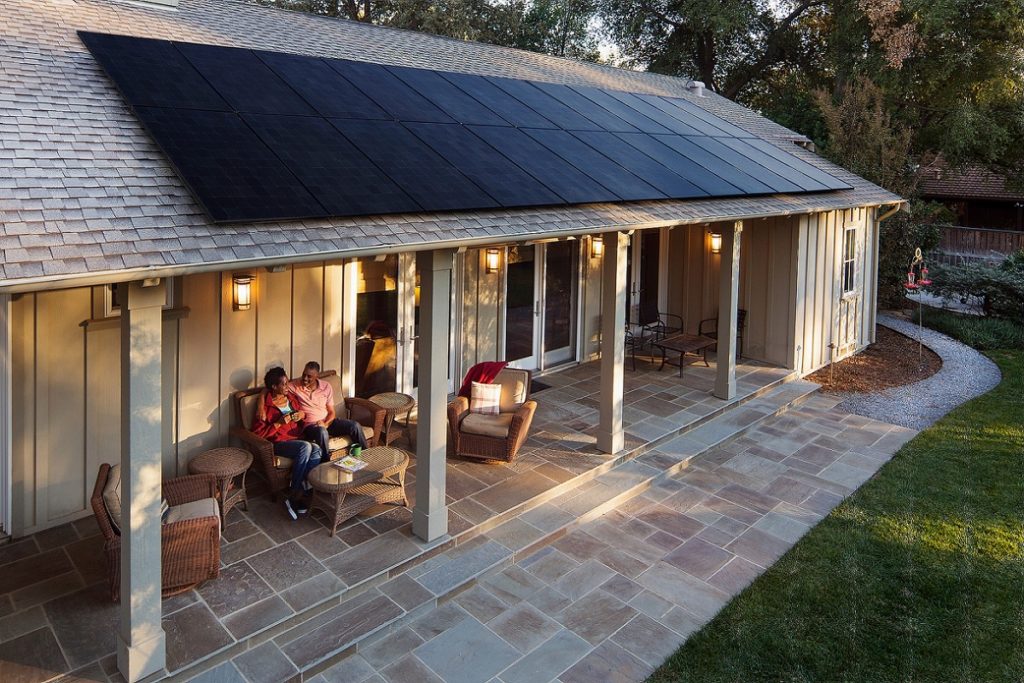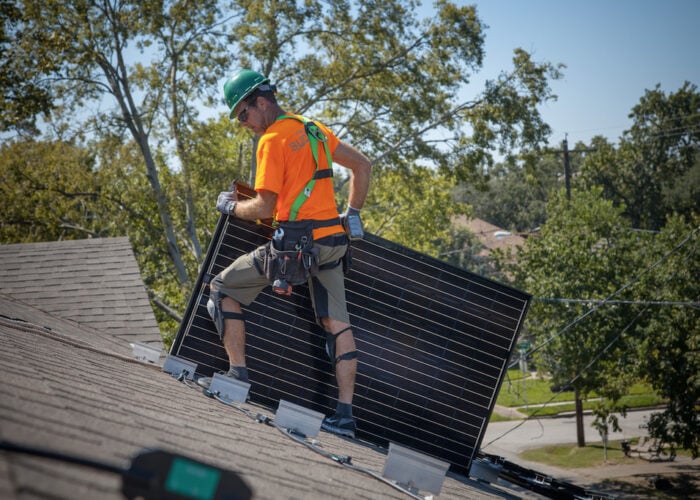
The US solar sector is experiencing unprecedented but profoundly uneven growth as many of the record-breaking achievements are paired with uncertainties and questions about aspects of the ever-expanding sector. Last year, for instance, the US added a record 32.4GW of new solar capacity, raising optimism about the future of the industry, but the residential sector, in particular, saw falling growth figures in the final quarter of the year, raising questions about its future.
This combination of positive growth and unanswered questions extends to individual companies, too. As the US looks to onshore more of its manufacturing capacity in particular, in the wake of the passing of the Inflation Reduction Act (IRA), a study commissioned by cadmium telluride (CdTe) manufacturer First Solar found that the company’s manufacturing work alone could add US$10 billion to the US economy.
Unlock unlimited access for 12 whole months of distinctive global analysis
Photovoltaics International is now included.
- Regular insight and analysis of the industry’s biggest developments
- In-depth interviews with the industry’s leading figures
- Unlimited digital access to the PV Tech Power journal catalogue
- Unlimited digital access to the Photovoltaics International journal catalogue
- Access to more than 1,000 technical papers
- Discounts on Solar Media’s portfolio of events, in-person and virtual
Yet First Solar may be the only major module supplier not to be affected by what Solar Media head of research Finlay Colville called “chronic overcapacity and pricing declines”, as the world’s solar manufacturing capacity meets the demand for new solar projects and makes further expansion less financially lucrative with each passing day.
This dichotomy has been perhaps best exemplified by the recent work of US solar company SunPower which, over the course of one day in February, went from raising US$300 million in funding to announcing the departure of its CEO. With the company shifting its focus to the US residential sector, at a time when there is uncertainty about residential solar in the US more broadly, the question remains: is this the right move at the right time?
Continued uncertainty
The company achieved several high-profile successes in its earlier years, including using its panels at a Florida plant dedicated by President Obama in 2009 and developing its X-Series of panels, which recorded a power conversion efficiency of 24.1% in 2016. Some of this success also translated to strong financial performances, with the company reporting that, between the fiscal years ending January 2021 and January 2023, the company’s total revenues more than doubled, from US$870 million to US$1.7 billion.
However, last December, SunPower announced that it would reissue financial statements for 2022 and the first half of 2023 because of issues relating to the valuation of its microinverter components.
While the specifics of these potential changes to the company’s results are not yet known, questions as to the accuracy of the company’s statements, which line up precisely with its most financially successful periods, have cast doubt over the company’s financial viability, according to Zoë Gaston, principal analyst, US distributed solar at Wood Mackenzie.
“The company had to restate some of its previous financial statements because the value of some equipment inventory was overstated,” says Gaston. “This correction resulted in a delay in filing its financials, causing SunPower to breach a credit agreement in December 2023. This event added to the headwinds SunPower was already facing and left investors feeling uneasy about the company’s future.”
The company’s shares fell by 41% during the week that it accepted it would have to reissue financial results, and SunPower then failed to rerelease its financial results on time. This allowed lenders to immediately demand US$65.3 million back in lent funds, without which the company would struggle to raise additional capital and continue operations.
This uncertainty has led to sustained financial struggles for SunPower. The company posted a net loss of US$247 million in the 2023 financial year, and the fourth quarter of 2024 saw SunPower post its fourth consecutive quarter of declining new customer additions, suggesting that it is struggling to attract new customers to help make up its growing deficits.
Last month, the company announced the departure of its CEO, Peter Faricy. This week, SunPower added a new chief revenue officer and executive vice president, Tony Garzolini, but the CEO position remains vacant, with an open “office of the chairman” position responsible for the search for a successor.
Shifting to residential
SunPower has sought to pivot to residential solar in recent years. The company did not respond to a request for comment for this piece, so the company’s motivation remains unclear, but Gaston notes the striking changes in the company’s operating processes in recent years.
“SunPower’s focus has certainly shifted over the years,” explains Gaston, highlighting how SunPower’s work has become more varied in recent years, beginning with its separation from international-focused company Maxeon in 2022.
“[SunPower] first exited the utility-scale development and module manufacturing spaces and then sold its commercial and industrial business in 2022 to focus on the residential segment,” adds Gaston. “SunPower also acquired BlueRaven in 2021, which expanded the company’s residential solar direct installation business and geographic footprint.”
This new approach may have yielded dividends already, with the company securing US$300 million in funding for residential solar and storage lease programmes earlier this year. In 2023, SunPower celebrated adding solar panels to its 100,000th home in the US, and in October signed deals with four US building companies to install the company’s panels at nearly 1,000 new build homes across eight states.
This suggests that there is some confidence from investors that the company’s new focus will generate revenue, but Gaston is less enthusiastic about the prospects for the residential sector.
“The company noted in its Q3 2023 earnings that it had experienced a contraction in customer sales and installations that lasted longer than previously expected,” says Gaston. “Therefore, SunPower reduced its 2023 guidance for customer additions. The company also noted that higher lease volumes have led to longer sales to installation cycle times, which is delaying revenue recognition.”
Headwinds and high interest rates
To an extent, SunPower’s entry into the residential sector is well-timed, as rooftop solar is meeting more US energy demand than ever before. A report from the Frontier Group and the Environment America Research & Policy Center found that small-scale solar generation increased by more than ten times between 2012 and 2022, by which point rooftop generation alone met 1.5% of total US energy demand.
US analyst Consumer Affairs notes that, by November 2023, there were 3.2 million homes in the US with solar panel installations and that by the end of the decade, 15% of US homes could have solar panels, up from just 2.7% in 2022.
However, Gaston suggests that this strong growth is unlikely to continue as the market becomes saturated and interest in installing new systems falters.
“The residential solar market continues to face headwinds with high interest rates and lower consumer demand,” Gaston explains. “Installers started to report a reduction in sales in some markets in early 2023, which has continued into 2024. This sales decline started to impact installation volumes last year, especially in Q4, and will continue to affect installations in 2024.”
Wood Mackenzie’s figures expect the California residential market to contract by 40% this year. Much of this scepticism stems from the California Public Utilities Commission’s lack of support for a proposed Net Value Billing Tariff, which was put forward by the Coalition for Community Solar Access (CCSA) and attracted broad support from the state’s solar sector.
Considering California’s outsized impact on the national solar sector, Wood Mackenzie expects the struggles of the state’s sector to drive a 13% contraction in the national residential solar market this year.
“Higher interest rates have also led to loan and third-party ownership product price increases, which are also hampering sales,” adds Gaston. “While it varies by state and company, we continue to hear that installers and financiers have been impacted by this slowdown, as evidenced by lower funded volumes from financiers and continued reports of installer bankruptcies.”
As a result, as SunPower has sought to provide more clarity and answer questions pertaining to its financial future by involvement in the residential sector, the company may make itself vulnerable to a wide spectrum of challenges that are affecting the residential sector as a whole.







